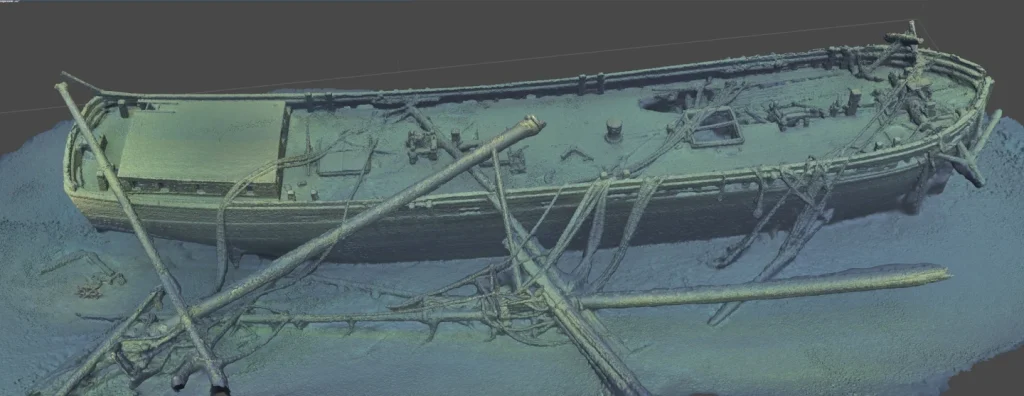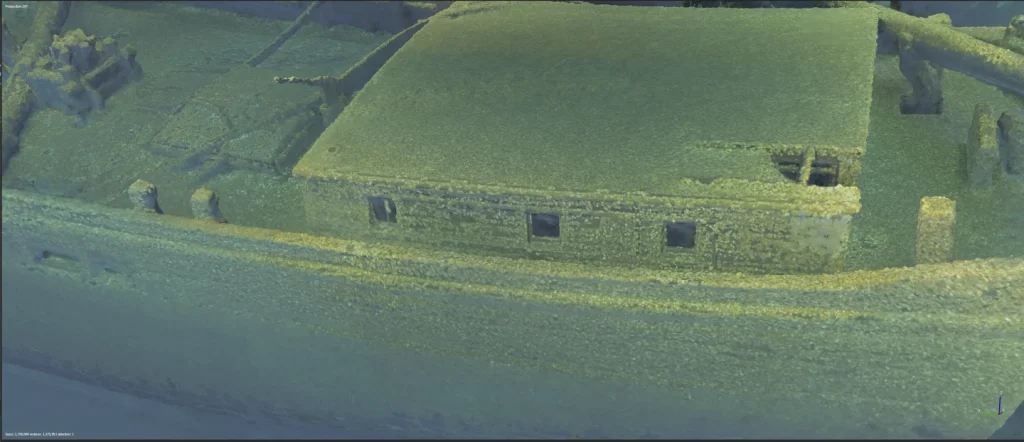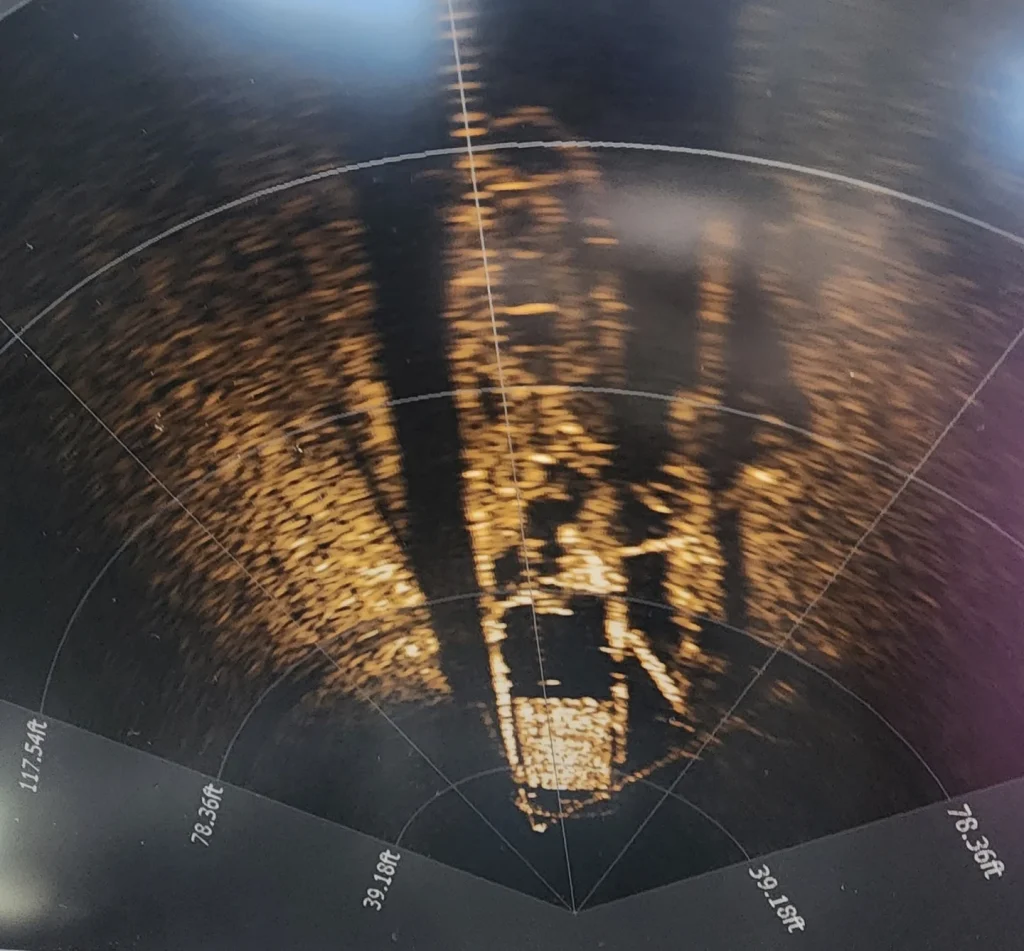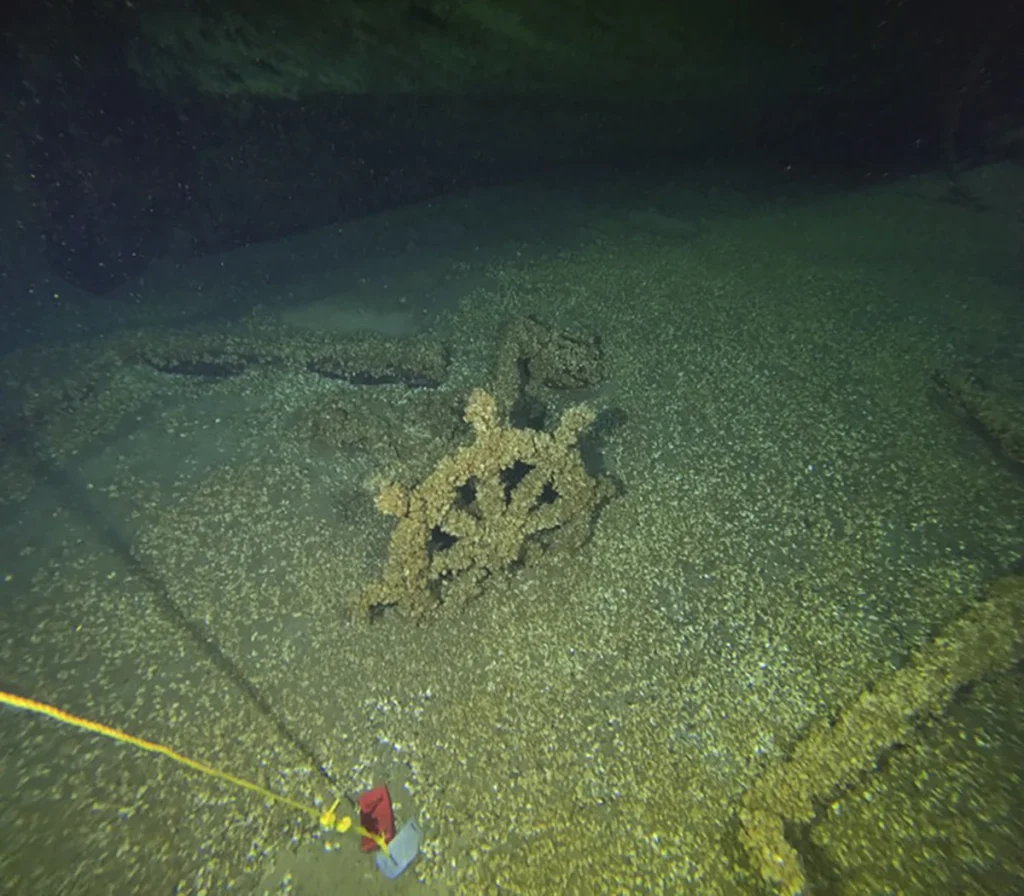In a remarkable discovery that has captivated maritime enthusiasts and historians alike, the shipwreck hunters of Algoma, Wisconsin have stumbled upon the astonishingly well-preserved remains of the Trinidad, a schooner that met its tragic fate in the depths of Lake Michigan over a century ago.
Dating back an impressive 156 years, this extraordinary find still holds the possessions of its ill-fated crew, serving as a poignant reminder of the lives lost and the stories that lie dormant beneath the waves.
The dedicated efforts of Wisconsin maritime historians Brendon Baillod and Robert Jaeck led to this momentous discovery in July, as they meticulously utilized side-scan sonar technology to pinpoint the Trinidad’s location, drawing upon survivor accounts meticulously documented in historical records.

This incredible find not only sheds light on the rich maritime history of the region, but also serves as a testament to the enduring power of exploration and the profound connections we can forge with the past through the relics it leaves behind.
The recent discovery of the Trinidad shipwreck in Wisconsin waters has garnered significant attention due to its remarkable preservation.
In an official news release issued on Thursday, it was declared that the wreck is one of the best-preserved shipwrecks in the region.
What makes it particularly fascinating is the fact that the deck-house remains intact, housing the crew’s possessions and providing valuable insights into their lives and experiences.
Furthermore, the presence of the anchors and deck gear adds to the authenticity and historical significance of the find.

This discovery not only sheds light on the maritime history of Wisconsin but also presents a unique opportunity for researchers and historians to delve deeper into the story of the Trinidad and the lives it once touched.
Constructed in the year 1867 by the skilled shipwright William Keefe at the prominent shipbuilding hub of Grand Island, New York, the awe-inspiring schooner spanned an impressive length of 140 feet, equivalent to approximately 43 meters.
This vessel, with its remarkable size and craftsmanship, played a pivotal role in the bustling grain trade that flourished between the bustling cities of Milwaukee and Chicago, as well as the vibrant port of Oswego, located in New York.
Serving as a vital link in the transportation network, this majestic schooner facilitated the movement of grain, a crucial commodity, across these key economic centers.
Its sturdy build and efficient design allowed for the safe and efficient transport of large quantities of grain, contributing significantly to the region’s economic growth and prosperity during that era.

On that fateful day in history, a colossal vessel, laden with a valuable cargo of coal destined for the bustling city of Milwaukee, encountered an unforeseen and calamitous event.
It was the morning of May 13, 1881, when this maritime behemoth, having successfully traversed the Sturgeon Bay Ship Canal, was met with an insidious and devastating leak.
This catastrophic breach of its hull marked the beginning of a tragic descent into the depths of the unforgiving waters.
The ship, now compromised and vulnerable, succumbed to the relentless forces of the sea, succumbing to its watery grave approximately ten miles off the picturesque coast of Algoma.
In its tragic descent, this ill-fated vessel carried with it not only the precious cargo it had carried so steadfastly, but also the cherished possessions of its valiant crew, their hopes and aspirations forever lost to the abyss.
Furthermore, it is with a heavy heart that we learn of the captain’s beloved Newfoundland dog, a loyal companion who met a similar fate, forever entwined with the tragic tale of this ill-fated ship.
In a remarkable tale of resilience and determination, Captain John Higgins and his courageous crew of eight managed to defy the odds and survive the treacherous waters, ultimately reaching the shores of Algoma, a remote location situated approximately 120 miles (193 kilometers) north of Milwaukee.
Their incredible journey, which spanned a grueling eight hours, was undertaken in the ship’s sturdy yawl boat, a vessel that proved to be their sole lifeline amidst the chaos and uncertainty that engulfed them.
Undeterred by the harrowing circumstances they faced, Higgins astutely surmised that the Trinidad’s hull had sustained significant damage a few days prior to its tragic sinking, a consequence of navigating through perilous ice fields in the notorious Straits of Mackinac.
It was this very damage that had ultimately sealed the fate of their beloved ship, leaving them with no choice but to embark on an arduous rowing expedition in a desperate bid for survival.
In July, Baillod and Jaeck made an intriguing discovery that would pique the interest of many. Eager to share their findings, they promptly reported their discovery of the Trinidad to an esteemed underwater archaeologist affiliated with the Wisconsin Historical Society.
Recognizing the significance of their find, the archaeologist wasted no time in organizing a thorough survey of the site.
To ensure accuracy and legitimacy, an underwater vehicle was deployed to verify the identity of the vessel and meticulously document the historic artifacts that lay within.
This meticulous approach aimed to preserve the historical integrity of the Trinidad and shed light on its fascinating past.
The news release announcing these developments served as a testament to the dedication and commitment of those involved in the field of underwater archaeology.
The creation of a three-dimensional model of the ship signifies a significant development in the preservation and exploration of the site.

This innovative approach allows people to virtually explore the ship, gaining a deeper understanding of its historical significance and the stories it holds.
The individuals behind this remarkable endeavor, Baillod and Jaeck, have demonstrated their commitment to preserving our cultural heritage.
Their collaboration with the Wisconsin Historical Society further solidifies their dedication to ensuring that this site receives the recognition it deserves.
By nominating the site to the National Register of Historic Places, they are actively working towards securing its place in history and ensuring its preservation for future generations to appreciate and learn from.
This commendable effort will undoubtedly contribute to the broader understanding and appreciation of our maritime history.
